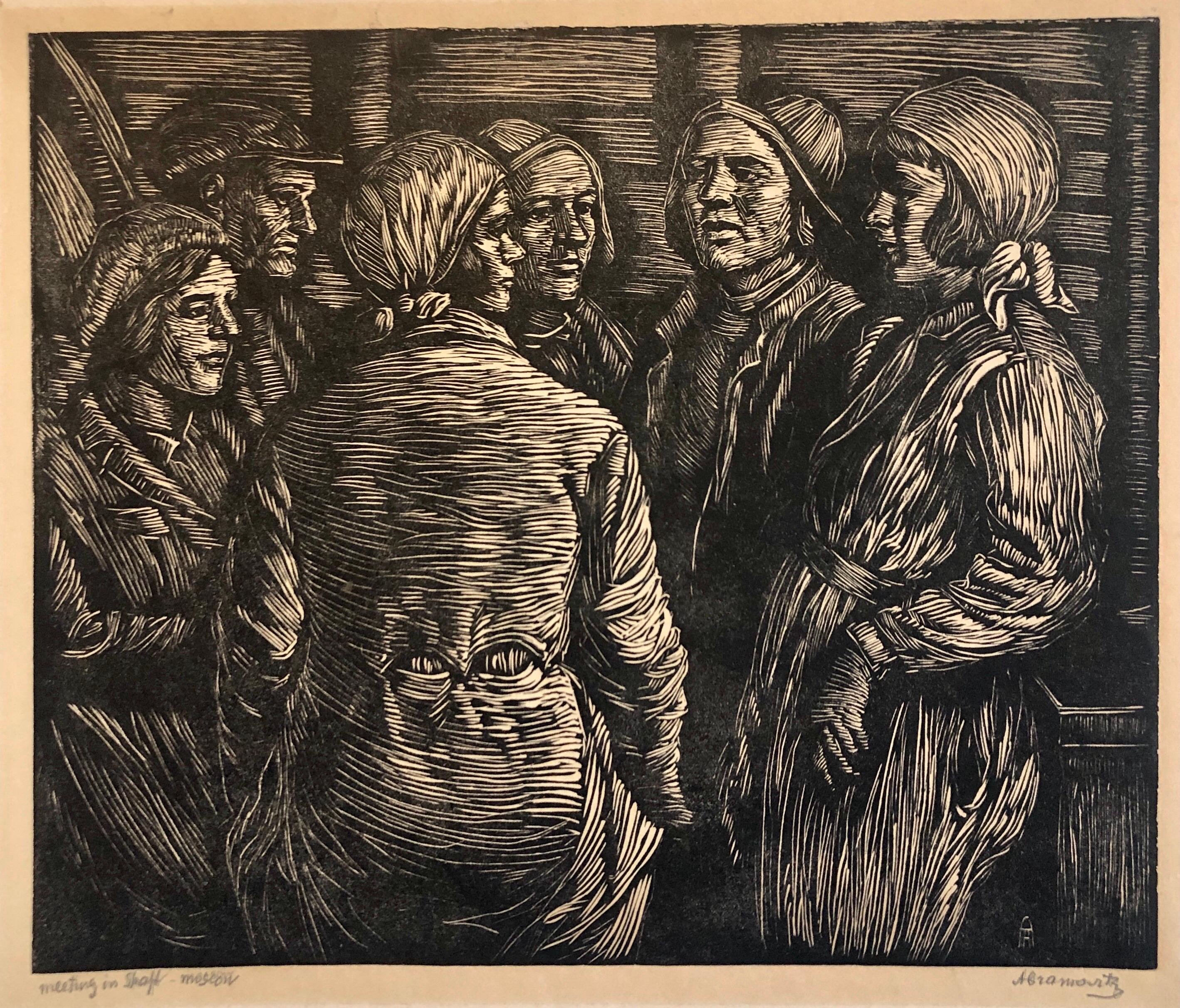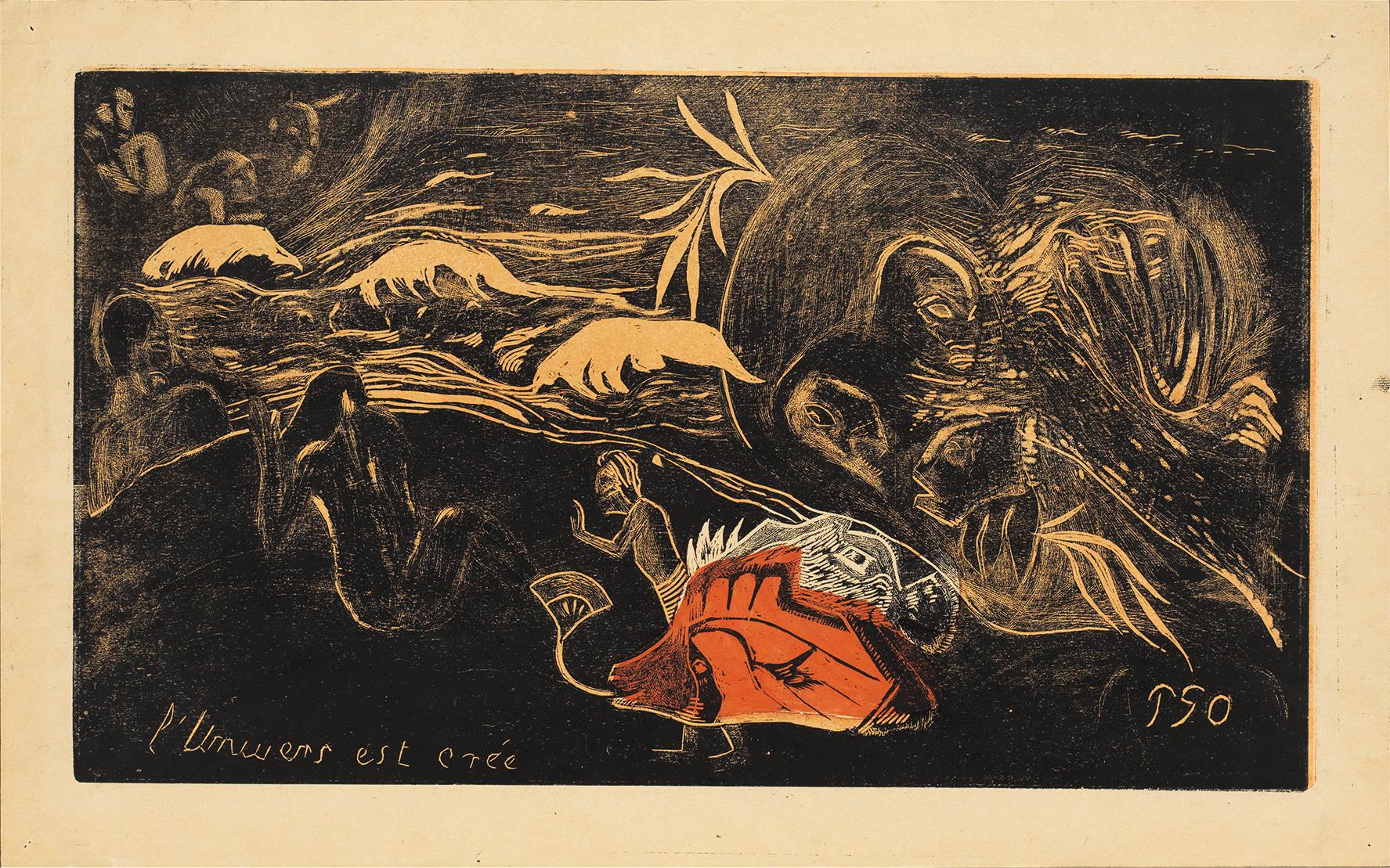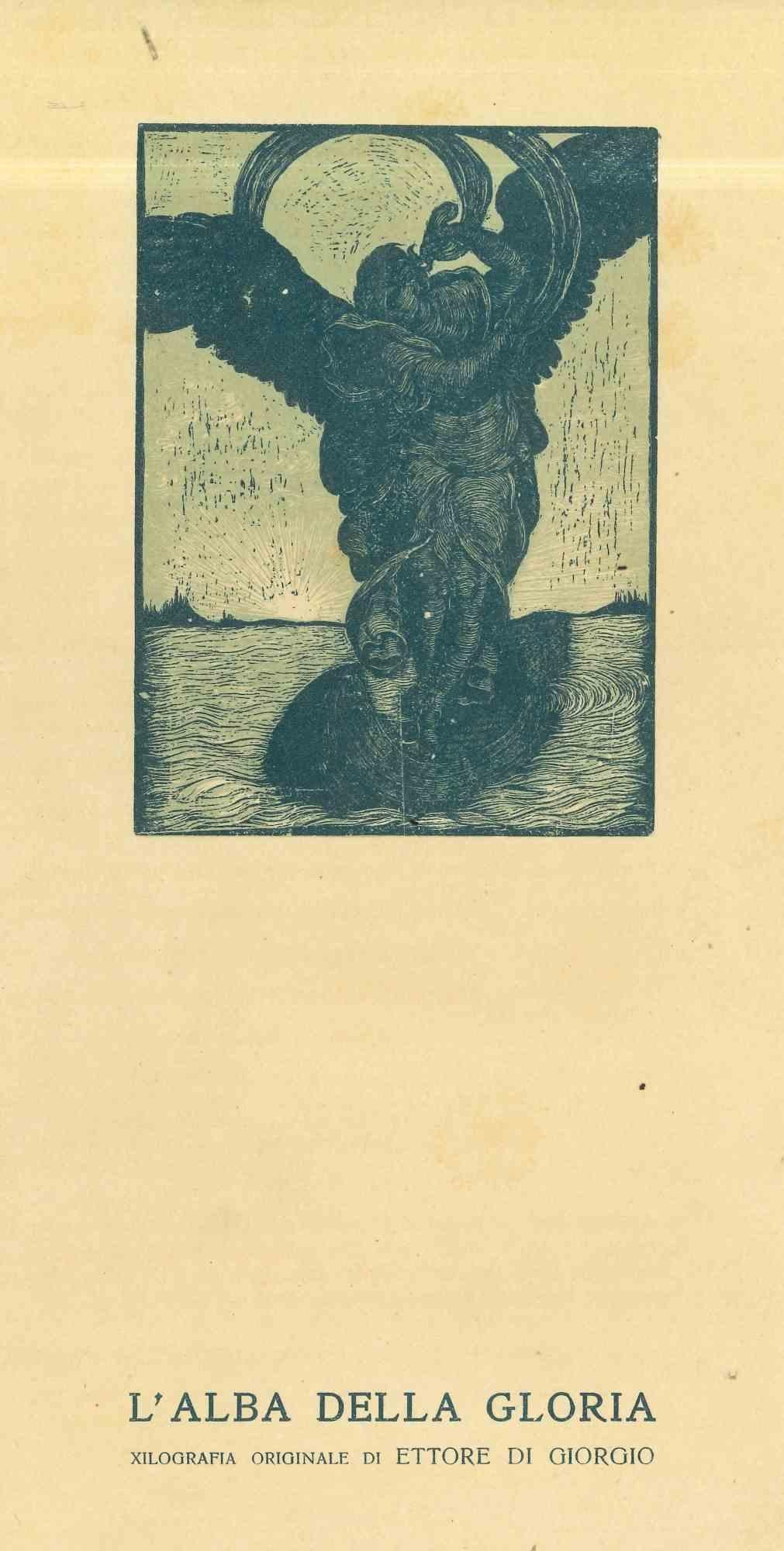Items Similar to Inari Kozo Tasaburo- Kabuki
Want more images or videos?
Request additional images or videos from the seller
Utagawa ToyokuniInari Kozo Tasaburo- Kabuki1820
1820
About the Item
Inari Kozo Tasaburo- Kabuki
Color woodcut, c. 1820
Signed: ‘Toyokuni’
Publisher: ‘Yamamoto Heikichi’
Censor: Hama and Magome
Very good impression and color
Sheet/Image size: 15 1/2 x 10 5/8 inches
Note: Kabuki actor Ichikawa Monnosuke is in the role of Inari Kozo Tasaburo. He swam the river and is wringing his clothes at the riverbank. A scene from the play “Edo no Hana Mukashi Nishiki E” performed at Kawarazaki theater.
Utagawa Toyokuni I (1769-1825)
Toyokuni Utagawa was one of the great printmakers of the late 18th century who made himself known by his ukiyo-e of beautiful women and later of actors. As the head of the Utagawa school he was also the most influential man on the next generation of ukiyo-e designers.
Toyokuni was born the son of a puppet maker. He learned printmaking as a student of Toyoharu. At the beginning of his career he concentrated on bijin-ga - images of beautiful women. His early works were influenced by Kiyonaga and Shigemasa.
Toyokuni's success and fame came when he started making actor portraits and actor scenes. The Kabuki theaters were very crowded at that time and the best known actors were a kind of public icons. Consequently prints related to Kabuki were a hot business. Demand came from the theaters - for advertising material - and from the fans - in the form of actor portraits. The production of actor portraits was like today's publication of celebrity posters.
When the demand for actor prints grew faster than the master could design, the great moment of the Utagawa School had come. An ever increasing number of students produced actor prints and book illustrations. The Utagawa School was buzzing with commissions.
The Utagawa School flourished so well that Toyokuni Utagawa is sometimes mentioned as the founder of the Utagawa School, but that was actually Toyoharu. Toyokuni, however, was the one who made it big and who went into mass production. The comparison may be a bit daring. But basically the Utagawa School was something like the Andy Warhol factory of the Pop Art culture - at least in commercial terms.
The best known ukiyo-e students of the master Toyokuni Utagawa were Kunisada Utagawa and Kuniyoshi Utagawa. The tombstone of Toyokuni listed altogether 29 students.
After the death of Toyokuni in 1825, two of his pupils rivaled about who had the right to become his successor - the conceited Kunisada, who considered himself the greatest on earth anyway, and Toyoshige, a mediocre printmaker who had the advantage of having married his deceased master's daughter. The row about the succession to Toyokuni as the head of the Utagawa School was fought on arguments over who was the best ukiyo-e designer. But that was an argument on the surface. The real fight was about who got control of a flourishing business company - the Utagawa School.
Toyoshige won the fight but died in 1835. From 1844 on Kunisada called himself Toyokuni. In today's literature Kunisada is referred to as Toyokuni III, Toyoshige as Toyokuni II and the master as Toyokuni I.
Courtesy, Artelino Literature sources used for this biography:
• Richard Lane, Images from the Floating World (New York: Konecky & Konecky, 1978)
• Laurance P.Roberts, A Dictionary of Japanese Artists (New York: John Weatherhill Inc., 1976)
- Creator:Utagawa Toyokuni (1769 - 1825)
- Creation Year:1820
- Dimensions:Height: 15.5 in (39.37 cm)Width: 10.63 in (27.01 cm)
- Medium:
- Period:
- Condition:
- Gallery Location:Fairlawn, OH
- Reference Number:
About the Seller
5.0
Recognized Seller
These prestigious sellers are industry leaders and represent the highest echelon for item quality and design.
Platinum Seller
These expertly vetted sellers are 1stDibs' most experienced sellers and are rated highest by our customers.
Established in 1978
1stDibs seller since 2013
713 sales on 1stDibs
Typical response time: 1 hour
Associations
International Fine Print Dealers Association
- ShippingRetrieving quote...Ships From: Akron, OH
- Return PolicyA return for this item may be initiated within 10 days of delivery.
More From This SellerView All
- Lingering Snow Mount YoshinoBy Utagawa KuniyoshiLocated in Fairlawn, OHLingering Snow Mount Yoshino (Shidzuka-gozen toiling through snow after her last farewell to Yoshitsune) Signed: Ichiyusai Kuniyoshi ga Censor seal: Tanaka Series: Kenjo hakkei ...Category
1840s Figurative Prints
MaterialsWoodcut
- On the Beach at Long Branch - The Children's HourBy Winslow HomerLocated in Fairlawn, OHOn the Beach at Long Branch - The Children's Hour Wood engraving, 1874 Published in "Harper's Weekly" August 15, 1874 (p. 672) Image size: 9 1/4 x 13 5/8 inches Provenance: Wunderlic...Category
1870s Hudson River School Figurative Prints
MaterialsWoodcut
- Blossom Time in TokyoBy Helen HydeLocated in Fairlawn, OHSigned by the artist in pencil on the image Reference: Tim Mason and Lynn Mason, Helen Hyde (Washington, D.C.: Smithsonian Institution Press, 1991), 115, reproduced in color p. 68.Category
1910s Figurative Prints
MaterialsWoodcut
- Takeda Daizendayu Harunobu (Nyudo Shingen) Crouching in a FieldBy Taiso YoshitoshiLocated in Fairlawn, OHTakeda Daizendayu Harunobu (Nyudo Shingen) Crouching in a Field Color woodcut, 1878 Signed: Oju Yoshitoshi hitsu; Seal: Taiso (See photo) From the series: "A Mirror of Famous General...Category
1870s Other Art Style Figurative Prints
MaterialsWoodcut
- The Ghost of Seigen Haunting SakurahimeBy Taiso YoshitoshiLocated in Fairlawn, OHThe Ghost of Seigen Haunting Sakurahime Color woodcut, May 1889 Signed: Yoshitoshi; seal: taiso, lower right (see photo) Plate 5 from the series "New Forms of the Thirty-six Ghosts" Publisher: Sasaki A very fine lifetime impression of the second state (bi-colored cartouche) (see photo) The murdered lover of courtesan Sakurahime appears in the smoke from her brazier Format: Oban Condition: Excellent Image size: 14 3/8 x 9 3/4 inches Reference: Beauty and Violence, Plate 6 Stevenson, "Ghosts", Plate 5 TAISO YOSHITOSHI (1839-1892) Taiso Yoshitoshi was born in the city of Edo (now Tokyo) just before Japan’s violent transformation from a medieval to a modern society. In the mid 19th century pressures from the United States and Europe brought an end to Japan’s two hundred years of self-imposed isolation. In 1868 a pivotal period began known as the Meiji Restoration. It was marked by the return of Imperial power, heightened militarism, a new constitution and industrial advancement, as well as social and political reform. In the midst of shifting values, woodblock print artists like Yoshitoshi struggled to create images that would satisfy the public’s changing tastes. During the Edo period (1600-1868) woodblock prints...Category
1880s Other Art Style Figurative Prints
MaterialsWoodcut
- The BathersBy Winslow HomerLocated in Fairlawn, OHThe Bathers Woodengraving, 1873 As published in Harper's Weekly, August 2, 1873 (p. 668) Provenance: Wunderlich & Co., Inc., New York, NY (Their stock no. ...Category
1870s American Realist Figurative Prints
MaterialsWoodcut
You May Also Like
- Moscow, Russia Workers Woodblock c.1930s WPA era Woodcut Print Hand SignedBy Albert AbramovitzLocated in Surfside, FLSome of his prints were published by the WPA. it is a wood engraving signed in pencil. From a small edition. It measures 12 X 12.5 full sheet with margins. image is smaller. Albert...Category
1930s American Impressionist Figurative Prints
MaterialsWoodcut
- Blue Face from the Brushstroke Figures SeriesBy Roy LichtensteinLocated in Miami, FLLithograph, waxtype woodcut and screenprint on 638-g/m cold-pressed Saunders Waterford Paper. From the "Brushstroke Figures" series, 1989. Hand signed rf Lichtenstein, dated ('89) a...Category
1980s Contemporary Abstract Prints
MaterialsLithograph, Screen, Woodcut
- In the Floating World - Portfolio of 16By Yoshitomo NaraLocated in Tokyo, 13LOT:20221109N01 Reworked woodcut, Fuji Xerox copy Each signed, dated and numbered Each edition 9 of 50 Each 41.5 x 29.5 cm Publisher: Tomio Koyama Gallery, Tokyo Provenance: Phillips Auction...Category
1990s Figurative Prints
MaterialsWoodcut
- L'Univers est crééBy Paul GauguinLocated in London, GBGauguin came back to Paris in August 1893 from his first stay in Tahiti, In the luggage numerous drawings and preparatory work for a book designed by him. In collaboration with the writer Charles Morice, parts of the text "NOA NOA" were created in Paris in the winter of 1893-1894. The plan was for a preferred edition with 10 almost identical woodcuts, all of which were made in the winter of 1893-1894. According to the individual proto-prints by Gauguin, the artist left the artist to Louis Roy...Category
1890s Figurative Prints
MaterialsWoodcut
- Dawn of Glory - Woodcut by Ettore di Giorgio - Early 20th CenturyLocated in Roma, ITDawn of Glory is an Original Woodcut Print on paper realized by Ettore di Giorgio in the Early 20th Century Good Conditions. The artwork is depicted through strong strokes in well-...Category
Early 20th Century Modern Figurative Prints
MaterialsWoodcut
- The Painter - Original Woodcut Print by Max Kurzweill - 1916Located in Roma, ITThe Painter in an original woodcut print realized by Max Kurzweill in 1916. Good conditions. The artwork is depicted through harmonious colors in a well-balanced composition.Category
1910s Modern Figurative Prints
MaterialsWoodcut, Paper
Recently Viewed
View AllMore Ways To Browse
The Philosophy Of Andy Warhol
Van Gogh Sketch
Matisse Original Drawing
White Sette
Antique Press Bed
Postmodern Lithographs
Vintage Metal Match Box
Mickey Nicolas
Nicholas Cochin
Antique Gold Ring 1896
Vintage Map South Africa
Vintage Maps South Africa
Music Note Table Value
Vintage Plane Clock
Black Clay Pot Weather
Circular Love Seats
Vintage Silver Table Bell
Wall Unit Bed





